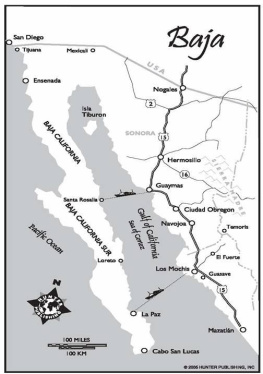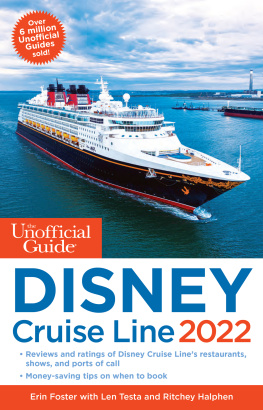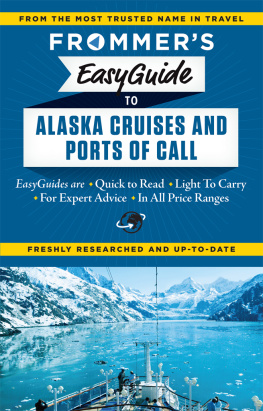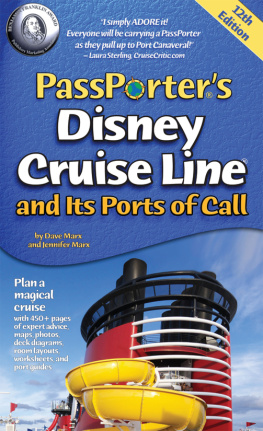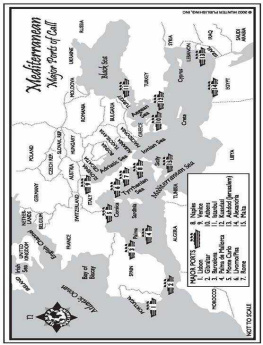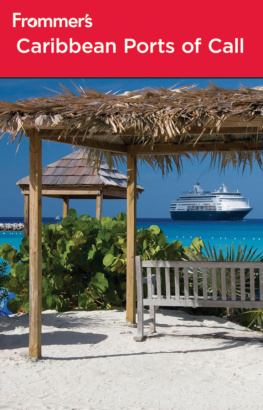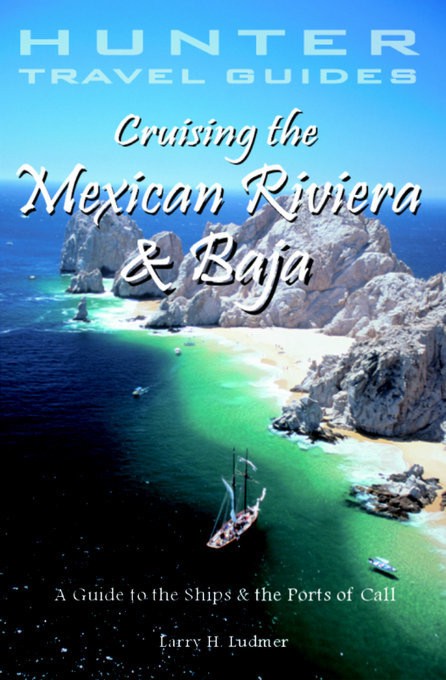
Cruising the Mexican Riviera: A Guide to the Ships & Ports of Call
Larry Ludmer
HUNTER PUBLISHING, INC.
130 Campus Drive, Edison, NJ 08818
732-225-1900; 800-255-0343; Fax 732-417-1744
www.hunterpublishing.xom
Ulysses Travel Publications
4176 Saint-Denis, Montral, Qubec
Canada H2W 2M5
514-843-9882, ext. 2232; Fax 514-843-9448
The Boundary, Wheatley Road, Garsington
Oxford, OX44 9EJ England
01865-361122; Fax 01865-361133
ISBN 1-58843-511-3
Larry H. Ludmer
All rights reserved. No part of this publication may be reproduced, stored in a retrieval system, or transmitted in any form, or by any means, electronic, mechanical, photocopying, recording, or otherwise, without the written permission of the publisher.
The publisher, author, affiliated individuals and companies disclaim any responsibility for any injury, harm, or illness that may occur to anyone through, or by use of, the information in this book. Every effort was made to insure the accuracy of information in this book, but the publisher and author do not assume, and hereby disclaim, any liability for any loss or damage caused by errors, omissions, misleading information or potential travel problems caused by this guide, even if such errors or omissions are the result of negligence, accident or any other cause.
Types of Cruises
C ruises to Baja and the Mexican Riviera can be classified in two major ways by their destination or their duration.
Destination
The typical cruise from southern California includes one port on the Baja Peninsula (almost invariably Cabo San Lucas) and usually two on the Riviera. There are also cruises that concentrate solely on one or the other. Cruises that sail only along the Mexican Riviera are usually one-way trips, either embarking or disembarking at Acapulco at one end, with the other gateway port in California. Some one-way itineraries begin from farther away than southern California in San Francisco for example. However, most of the cruises are round-trips from either Los Angeles or San Diego. Many cruises that originate in Florida or Puerto Rico traverse the Panama Canal and then cruise up along the entire Pacific coast of Mexico before typically ending in California. Some of these are year-round but the majority are "repositioning" cruises that are designed to eventually get ships to Alaska for the summer season. Repositioning cruises can often be had at much lower rates for cruises of comparable length in seasonal or year-round markets.
Duration
W hile the typical Baja-Mexican Riviera "combination" cruise is one week long (seven nights) and runs from Saturday to Saturday or Sunday to Sunday, there are other cruises both longer and shorter. There are both three-day and four-day cruises from Los Angeles or San Diego that go only as far south as Baja's Ensenada. The four-day cruises include a port call at Catalina Island, while the three-day versions do not. Cruises of anywhere from eight to 14 nights are also available and these typically stop at a greater number of ports along the Mexican Riviera and Baja. Itineraries originating in San Francisco or other ports farther from southern California can be anywhere from seven to 11 nights. Panama Canal cruises with Mexican ports of call can run from 11 to 16 nights.
Style
A third possible means of classification is by the style of cruise. This involves the degree of luxury and the degree of formality. The mass market lines don't vary a great deal in this regard. It's only when you get into the upscale lines such as Crystal that there is a significant difference.
Cruise Lines with Baja & Mexican Riviera Itineraries
The primary cruise lines operating in Baja and the Mexican Riviera are Carnival, Celebrity, Holland America, Norwegian, Princess and Royal Caribbean. This list includes the biggest cruise lines in the industry, names almost all American travelers are familiar with. Carnival and Royal Caribbean are the only lines that offer three- and four-night Baja cruises year-round. They, along with the four other lines, also offer itineraries covering the Mexican Riviera from the fall through the spring and lasting a minimum of one week. All six lines have trans-Panama Canal cruises. Sometimes these are offered on a regular basis, but in many cases they are repositioning cruises, with one departure per ship in each direction annually. Complete details on these lines and their ships, along with some information on other operators, is given in the section that follows.
The Mass Market Lines & Their Ships
The term "mass market" isn't meant to be derogatory in any sense. It simply means that these cruise lines appeal to the broadest section of the traveling public because they offer choice and luxury at an affordable price. They are also the lines that have the most ships in service on Mexican routes. The largest lines are innovative in terms of onboard activities and services and are also known for having many new ships, including some of the largest that can be found operating in any part of the world. Each of the major lines will be profiled in depth prior to a ship-by-ship description of their vessels. Only those ships serving the Mexican Riviera and Baja will be fully described. Vessels visiting Mexico via trans-Panama Canal itineraries only will have more limited descriptions.
Some things apply to all ships of a given cruise line. For example, cuisine and entertainment policy won't vary much at all from one ship to another on the same line. Thus, general information that is given in the cruise line profile won't be repeated in the individual ship descriptions unless it significantly differs in some way.
Statistical information for the cruise lines and individual ships is mostly self-explanatory. However, a few items should be clarified. The number of ships shown under the Fleet heading is the total vessels in service as of January, 2005. This includes all of the ships of that line and isn't limited to the number serving the Mexican Riviera and Baja. The figure for Under Construction includes projects currently in the shipyards and firm order commitments. Individual ship description details are listed below.
Year Built: The year of the ship's maiden voyage. The year of any major refurbishment will be indicated in brackets for any ship built in 1995 or earlier.
Passengers: Indicates the number of passengers the ship will carry based on double occupancy of all staterooms. I use this basis because it is the most commonly accepted method in the cruise industry. You might well see other numbers given in various sources of information on any particular ship. These may include additional persons in the rooms. A ship that is fully booked will almost certainly be carrying far more people than the double occupancy figure.
Passenger/Crew Ratio: The number of passengers divided by the number of crew members, expressed as a ratio, such as 2.4:1. In theory, the lower the number, the better the service. While the luxury lines are the only ones that have ratios of less than 2:1, I have yet to find any reliable correlation to minor variances in the ratio. I have been on ships with a 2.7:1 ratio where the service was better than on a ship with a 2.2:1 ratio. The ratio is a general indication of service only.
Stateroom Size: Rooms on ships are a lot smaller than what you will find in a hotel, or even in most inexpensive motels for that matter. This is important to keep in mind if you have never sailed before. The measurements are in square feet and the range shows the smallest to the largest accommodation, including suites. Measurements are for the room only that is, they do not include the balcony in cases where one exists.

